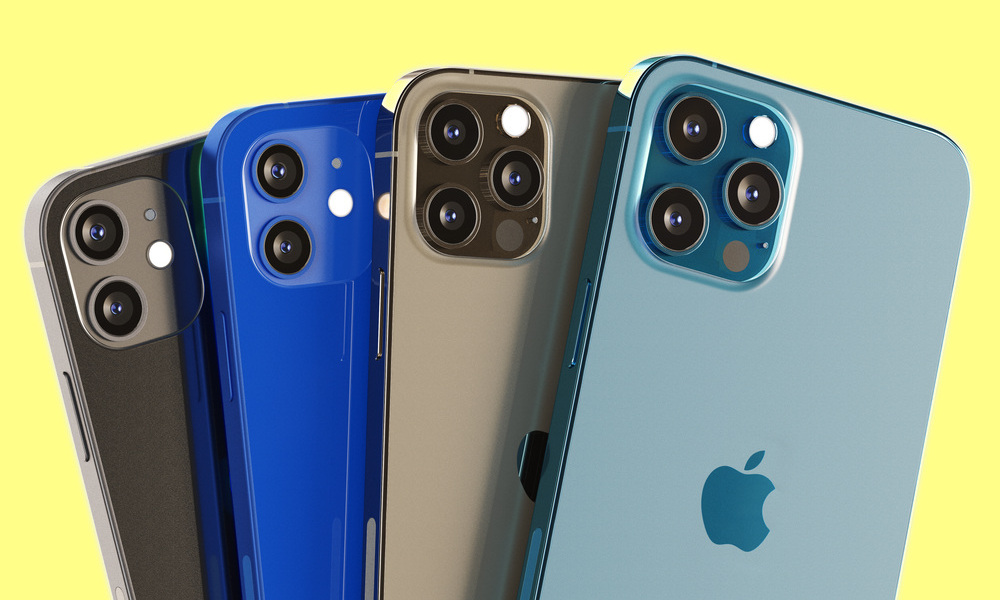Apple’s iPhone 12 Became the Best-Selling 5G Phone on the Planet in Only Two Weeks
 Credit: Aldeca Productions / Shutterstock
Credit: Aldeca Productions / Shutterstock
Toggle Dark Mode
The delayed release of the iPhone 12 this year doesn’t appear to have done anything to hurt sales, with a new report indicating that Apple’s standard 6.1-inch iPhone 12 dominated the 5G smartphone industry in a mere two weeks after it was released.
In fact, confirming predictions by several analysts last year, the iPhone 12 quickly eclipsed every other 5G smartphone on the market, leaving Samsung’s Galaxy Note 20 Ultra 5G in the dust, which came in third place (behind the iPhone 12 Pro, naturally).
According to Counterpoint Research, by the end of October, the iPhone 12 had captured 16 percent of the global 5G smartphone market share, while the iPhone 12 Pro made up another eight percent. The Samsung Galaxy Note 20 Ultra 5G had dropped to a mere four percent.
Apple’s 6.1-inch iPhone 12 and iPhone 12 Pro models made up 24% of the 5G smartphones in use worldwide at the end of October.
By contrast, the three Samsung phones that made the top 10 list accounted for a mere 8% of the global 5G market, while Huawei’s came in at 9%, and Oppo’s at 5%.
Of course, if you do the math, you’ll notice that the top 10 models only add up to 46%, suggesting that companies like Samsung and Huawei may have still had stronger market share overall, simply by spreading across a wide range of less popular models. However, it’s still far more significant that Apple has managed to rise to such prominence in only two weeks, and Counterpoint’s numbers are only for October and therefore don’t even factor in the impact of the iPhone 12 mini and iPhone 12 Pro Max, which many iPhone buyers were holding out for.
It’s also notable that the iPhone 12 moved into the position of seventh best-selling 5G smartphone in 2020 after only being on the market for two weeks. In other words, in a mere two weeks the iPhone 12 handily beat out many devices that had already been on the market for several months.
Rapid Growth
Of course, it really shouldn’t come as a big surprise that Apple’s standard iPhone model is once again dominating the charts. The iPhone XR held the global lead for over a year, until it was unseated by the iPhone 11, which by all reports remains in the lead among smartphones overall; these latest numbers refer specifically to 5G smartphone market share, but with demand for the new iPhone 12 being higher than ever, we remain confident that the iPhone 12 will surely move into the dominant position in the first half of 2021.
The report by Counterpoint attributes the much more rapid growth of the iPhone 12 to several factors, including pent-up demand among iPhone users for a 5G capable iPhone — something analysts have already been talking about for a while — with many users having held out on last year’s iPhone 11 lineup in anticipation of the upcoming 5G models.
Other factors that came into play included much stronger carrier promos, particularly in the U.S., where many carriers were offering incredible deals, which Counterpoint notes accounted for about one-third of all iPhone 12 sales in October.
Leading from Behind
One other interesting point that the report makes is that it’s Apple’s iPhone 12 series that will very likely push carriers worldwide to speed up their adoption of the ultrafast mmWave technology, which at this point remains largely limited to Verizon in the U.S., and so scarce in other countries that Apple hasn’t even seen fit to release its mmWave-capable iPhone 12 models beyond the U.S.
Thanks to the iPhone 12, however, the penetration of mmWave capable smartphones more than doubled in October, increasing to 12% compared to 5% the month before.
This should provide an incentive for U.S. carriers to expand their mmWave infrastructure more quickly, which will unlock the true potential of 5G thanks to the faster speeds and lower latency that it offers, which in turn would bolster Apple’s efforts to implement AR/VR features to take advantage of more ubiquitous mmWave coverage.
Further, even though the mmWave iPhone 12 remains confined to the U.S. right now, carriers elsewhere around the world can now be confident that if they build out their mmWave infrastructure, there will be mmWave-capable iPhone 13 models available to them next year, since despite rumours that Apple would be limiting the faster 5G technology to only the higher-end iPhone 12 models, the company has proven that it wants to be able to deliver mmWave for everyone.






